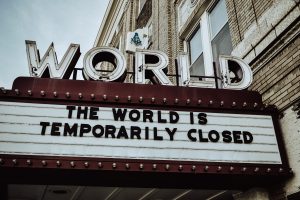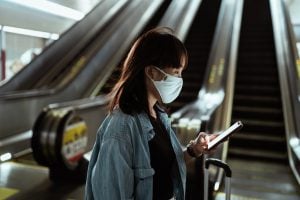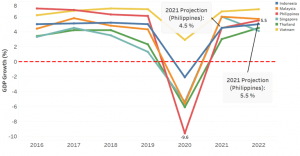BLOGS
Opening of Cinemas and Theaters in the Philippines
It is now the New Normal and the world is finally opening its doors to the public again. In the Philippines, travel restrictions have been lifted, restaurants are fully operational, and even face shields have been eliminated from the essential PPE and safety guidelines, leaving only the face mask as a requirement. One recent update is the opening of cinemas.

The world is indeed temporarily closed, but not for long. In fact, cinemas have already opened its doors to the public.
The opening of cinemas is a pretty huge deal not just for workers in the entertainment and retail industry, but also for the general public. The cinema has been family bonding activities, first dates, and friendship outings pre-pandemic times. It is a place of laughter, tears, joy, amazement, and literally every emotion you could think of. The showbiz industry is run by emotion after all, and by public recognition of movie makers’ creativity, skills in the likes of cinematography, and talents, among others. And even if you watch the latest movies on your flat screen 4K TV while sitting on your lazy boy couch from your luxury home in Crosswinds or Portofino, being in a cinema is a completely different yet familiar experience that the public has been craving for two years.
From an economic standpoint, the resumption of cinema operations also has a particular impact on the country. Here is everything you need to know about the opening of cinemas and theaters in the Philippines.
Suggested Read: Movies To Look Forward To During The Reopening Of Cinemas
COVID-19 Guidelines for Opening of Cinemas and Theaters in the Philippines

It is important to strictly follow the safety precautions when watching a movie or entering any establishment during the pandemic. | Photo by Ketut Subiyanto from Pexels
On 10 November 2021, Philippine cinemas officially reopened after two years. This was done after the Inter-Agency Task Force (IATF) released new guidelines for places under the Alert Level 3, including Metro Manila. However, since it is still dangerous to sit closely to people in an enclosed space, certain policies were put in place, and rightly so. Only 30% of the venue capacity is allowed, only fully vaccinated moviegoers are allowed, and there is a strict one seat apart policy enforced even for those who entered the cinema together. In addition to that, the Cinema Exhibitors Association of the Philippines (CEAP), through “Sa Sine Safe Ka,” has released a detailed set of protocols to ensure the safety of moviegoers and theater staff. These include the following:
· Body temperature check
· Inspection of customers’ authentic vaccination card
· Wearing face shields and face masks while inside the theaters
· Encourage contactless transaction in ticket-purchasing
· No eating inside the cinemas
· Socially-distanced seats
· Improved air ventilation
· Availability of hand sanitizers at the cinema entrances
· Mandatory hand-washing every 30 minutes for cinema employees
· Deep cleaning between screenings.
If you are planning to visit the cinemas soon, make sure to keep these protocols in mind to ensure an enjoyable yet safe experience for everyone including yourself.
Suggested Read: Lights, Action! Reopening Of Broadway
The List of Cinemas that are Open to the Public

The Evia Lifestyle Center’s IMAX Theater With Laser is open to the public.
Here is a list of cinemas you can visit by city, as of 9 November 2021:
Quezon City
· Ayala Malls Cloverfield
· Eastwood Mall
· Fairview Terraces
· Fisher Mall
· Gateway and Ali Mall Cineplex
· Trinoma
Makati City
· Century City Mall
· Glorietta 4
· Power Plant Mall
Taguig City
· Bonifacio High Street
· Market! Market!
· Uptown Mall
· Venice Mall
· Vista Mall Taguig
· Starmall Taguig
Mandaluyong City
· Starmall EDSA
· MANILA CITY
· Cinerama
· Lucky Chinatown
Muntinlupa City
· Festival Mall
· Starmall Alabang
San Juan City
· Greenhills
· Santolan Town Plaza
Malabon City
· Fisher Mall
Paranaque City
· Ayala Malls Manila Bay
Pasay City
· Newport Mall
Valenzuela City
· One Mall
Las Pinas City
· Evia Lifestyle Theater
The Effects of Reopening Establishments on The Philippine Economy
The country’s economy has suffered greatly in many sectors. Only a few areas such as the services sector and the luxury real estate sector have successfully adapted to the pandemic.
The Philippine economy was finally rising before the pandemic. In fact, according to Brookings nonprofit public policy organization based in Washington, DC., the Philippines was one of the fastest growing economies in the world back in 2019. Posting over 6 percent average annual growth between 2010 and 2019 (computed from the Philippine Statistics Authority data on GDP growth rates at constant 2018 prices), the Philippines was touted as the next Asian tiger economy.
However, when the COVID-19 pandemic hit the world economy, the Philippines experienced the lowest dip in terms of GDP growth compared to other ASEAN countries, as seen in the figure below:

Asian Development Bank’s figure on ASEAN nation’s GDP growth before and during the COVID-19 pandemic, as well as its forecast, as of April 2021.
It can also be inferred from the figure that the Philippines will experience a slow recovery based on the current government policies and economic situation. The closure of thousands of businesses and prolonged unemployment and disrupted education caused by the pandemic could have long term consequences as well. That is why the recommended goal for the country is to reach herd immunity so that establishments can reopen, people can go back to work, students can go back to school, and life will relatively be back to normal without fear of another wave of COVID-19 cases.
In an interview with Philippine News Agency, Trade Secretary Ramon Lopez claimed that, “We have to continue the gradual and safe reopening, to bring back the vibrant economic activities, jobs that will re-stimulate demand to revive the industry sector.” DTI also reported that starting in 2020, the use of digital solutions was high among sectors of information and communications technology, professional services, education, tourism, financial activities, arts and entertainment, rental and leasing, health, and real estate, among others. This means that if you were one of the many Filipinos who decided to transfer from a cramped up neighborhood to a spacious Brittany Corporation luxury house and lot for sale, then there is a high chance that you were able to process everything online. On the other hand, most companies in transportation, wholesale and retail trade, food services, agriculture, and motor repair did not utilize digital platforms.
Economists today are emphasizing the importance of reopening establishments to consumer confidence, which is crucial in translating to a climb in demand for goods and services that will increase gross domestic production. The opening of cinemas is actually a huge step to increase consumer confidence and satisfaction. More and more segments of commerce and industry are being allowed to re-open their doors, allowing Filipinos who have received their vaccines to enjoy some degree of leniency in physically re-engaging with commercial establishments, which should be encouraged. Together with this, reporting to work can be resumed with clear workplace protocols as well.
However, there are still other hurdles that are intertwined with each other when it comes to economic recovery. Aside from the battle against COVID-19 pandemic itself and the race to achieve herd immunity before the year ends, there are also issues in the Peso devaluation and oil due to the reopening and rise in industrial activities. As demand returns to the system and supply remains low, oil prices are rising significantly. Last October 19, unleaded gasoline prices spiked to over 70 pesos per liter. That is significantly higher than what the price was just a few months ago. Since the Philippines imports most of its oil requirements, the weakening Peso is another cause for concern that could compound the rise in energy prices. And since petrol is an almost ubiquitous cost of production, the impact on commodity and transport prices is likely to be significant. Clearly, this will fuel the inflation rate which is already at around 5 percent. The Bangko Sentral has so far kept interest rates low and kept liquidity in the market high to help stimulate economic activity.

Oil and gas prices will be increasing for a while during the economy’s slow recovery period. | Photo by Gab Pili on Unsplash
Things may seem bleak during the recovery phase but it is always better to battle through inflation rather than to not reopen businesses and institutions as well. There is definitely going to be a learning curve for businesses and consumers alike, and even local governments units will have to monitor the effects of their decisions during the New Normal. Trust that this phase will pass and the country will get back on its feet if, together with the reopening of establishments, the government will fast track the population’s vaccinations, implement proper health and safety protocols, installing new health benefits for workers, and enforcing best practices that can be learned from neighboring countries who are economically on the rise such as Singapore.
For now, you can do your part as a consumer in safely supporting the reopening of industries including the opening of cinemas, as well as being a good citizen by reminding your peers to practice social distancing and other safety measures against COVID-19.
NEXT READ: Things You Need To Know Before Visiting The Enchanting Christmas Display Of Crosswinds Tagaytay
NEXT READ: Advantages Of Investing In Tagaytay
NEXT READ: Vista Alabang’s Housing Market Sees Strong Price Appreciation

















